site search
online catalog
VERY SCARCE 1799-1800 SWAN CONTRACT VIRGINIA MILITIA REGIMENTALLY MARKED MUSKET: 42nd REGIMENT, PITTSYLVANIA

Hover to zoom

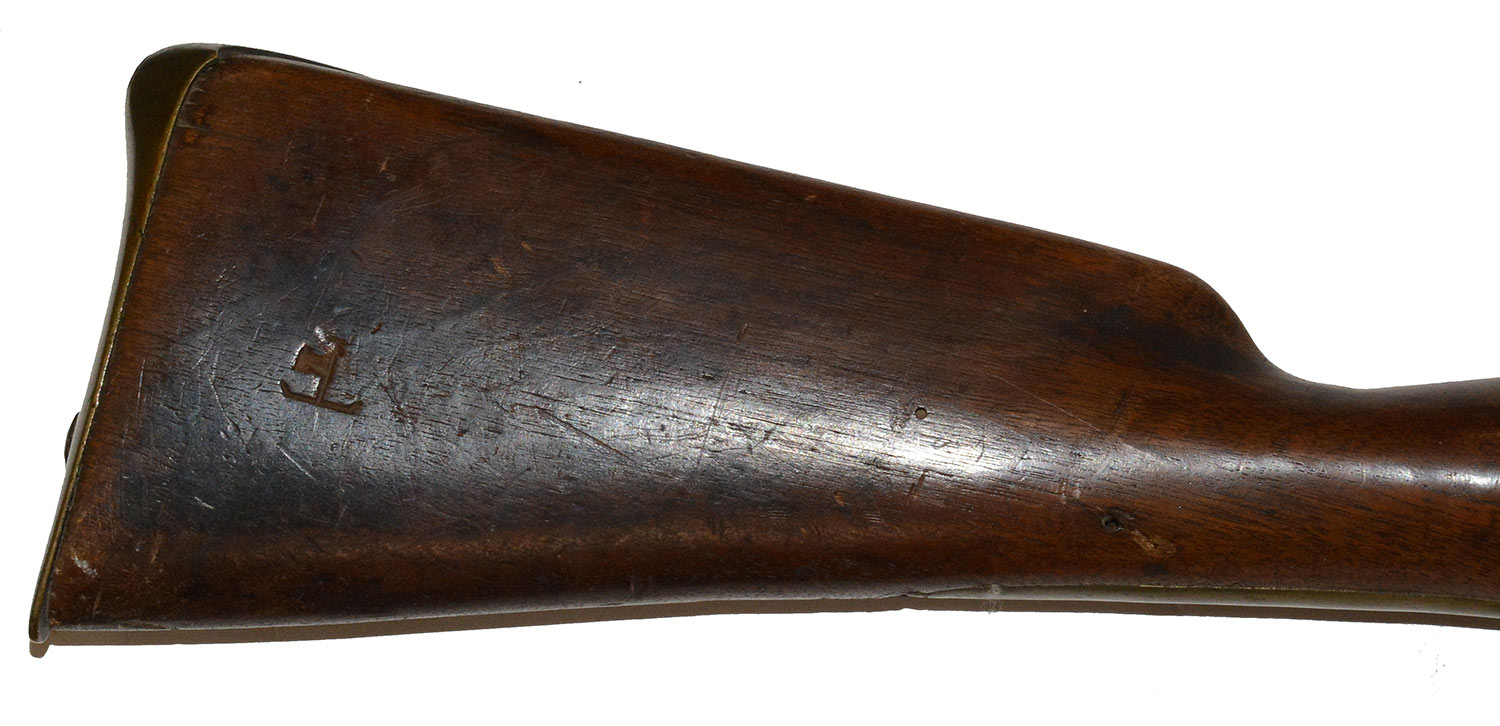
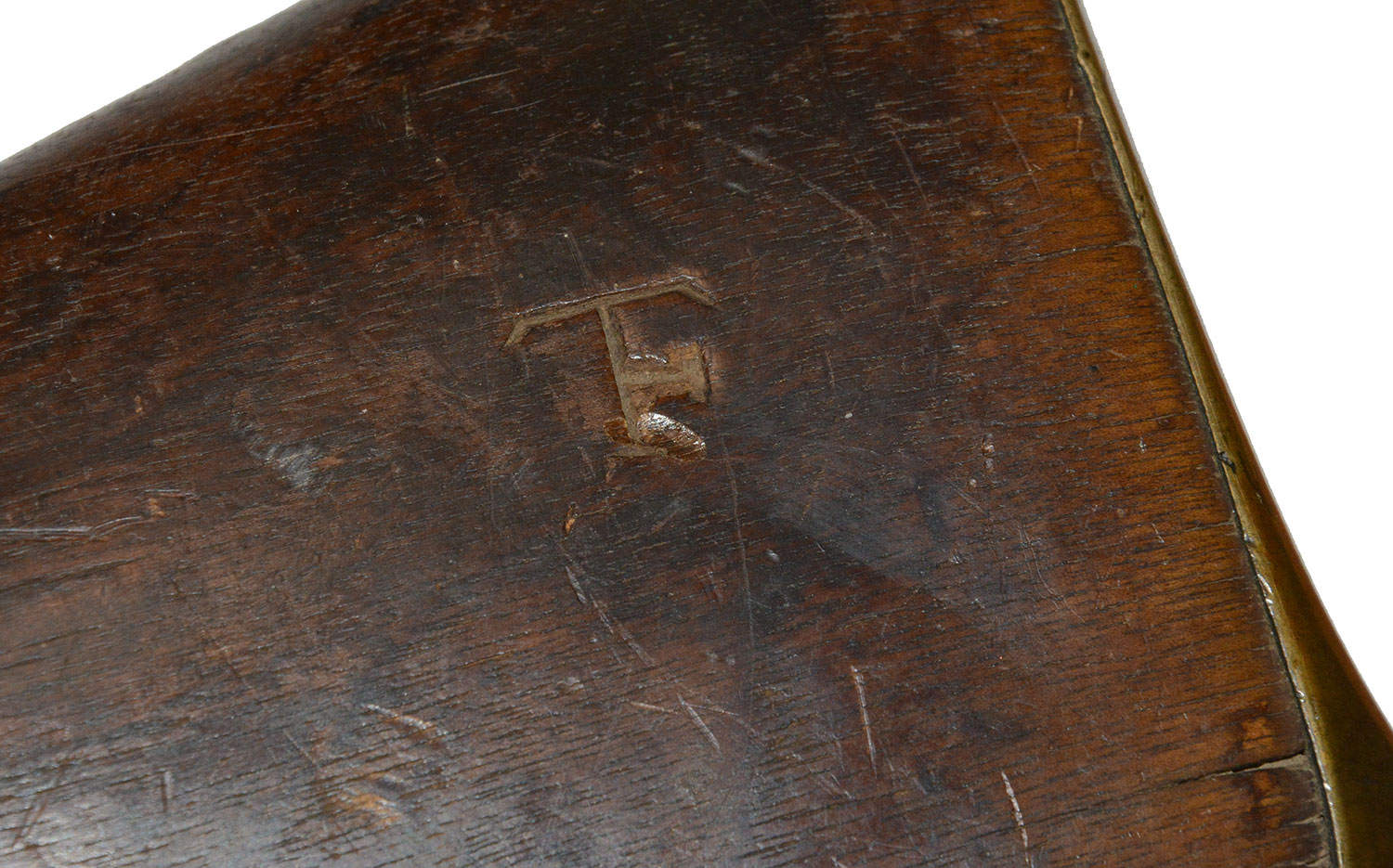


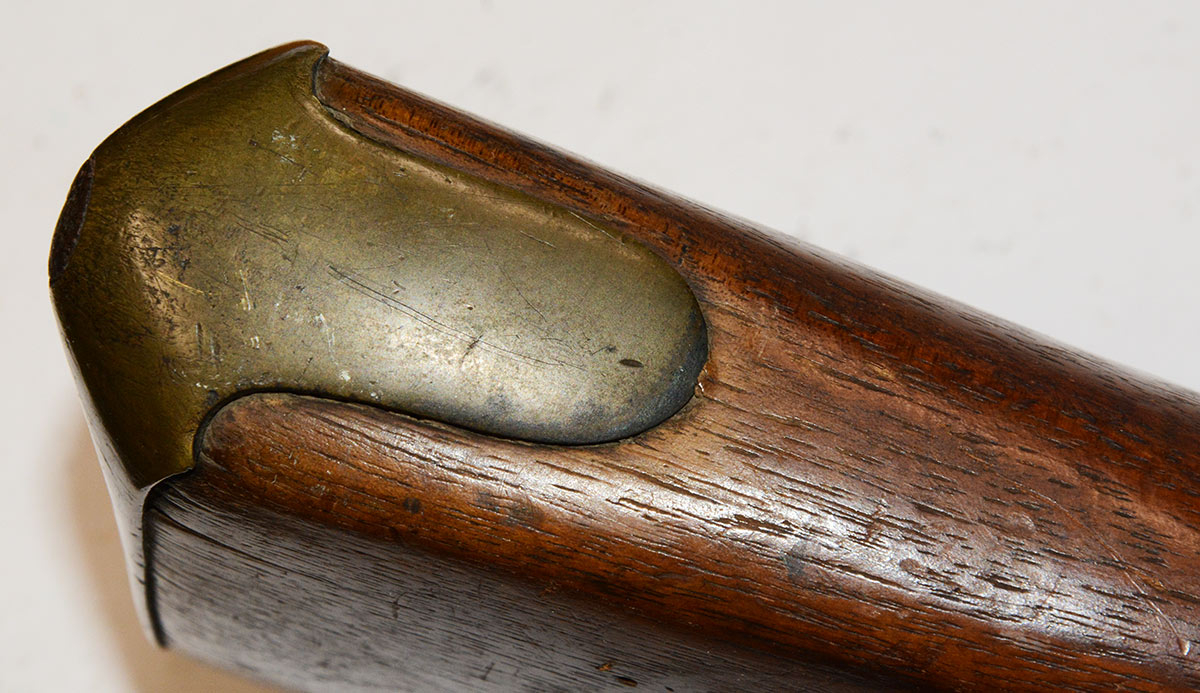
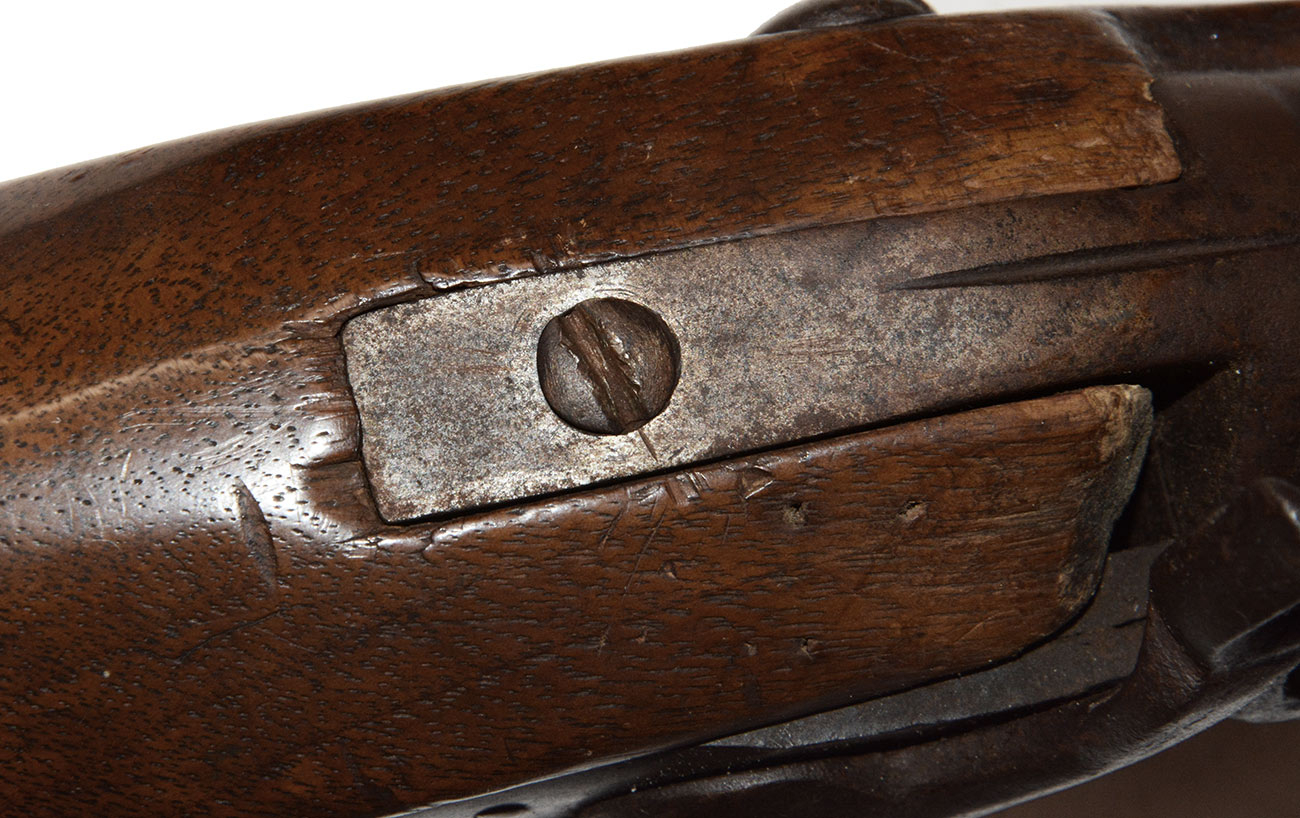
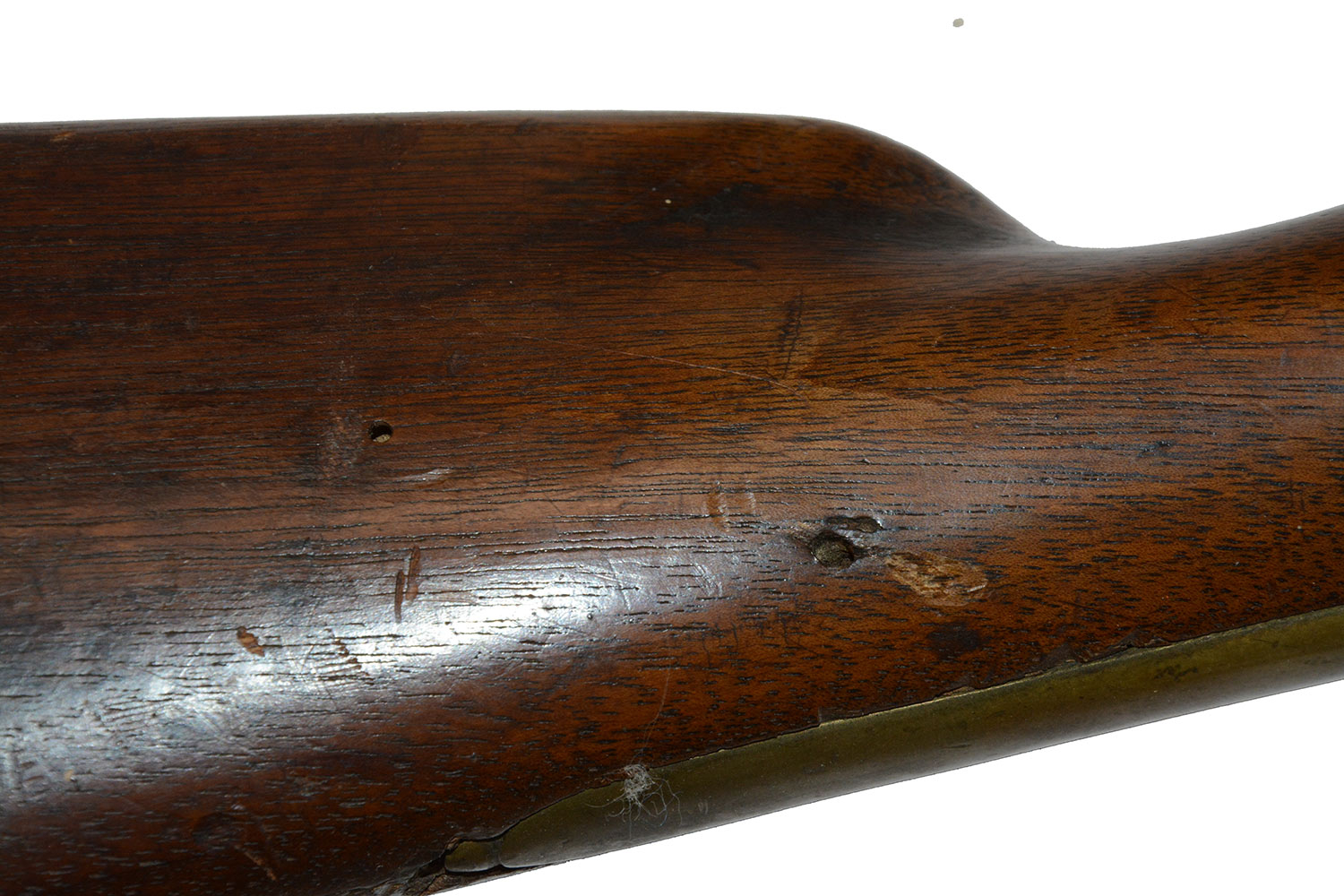
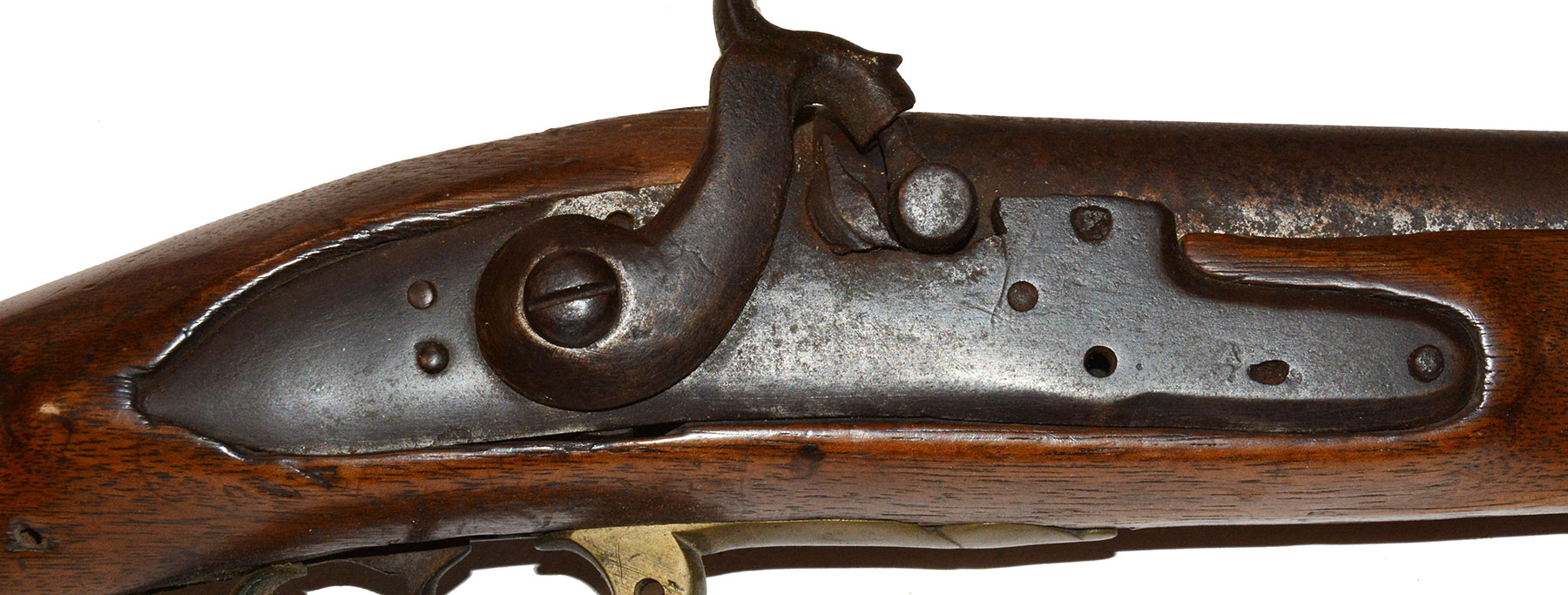
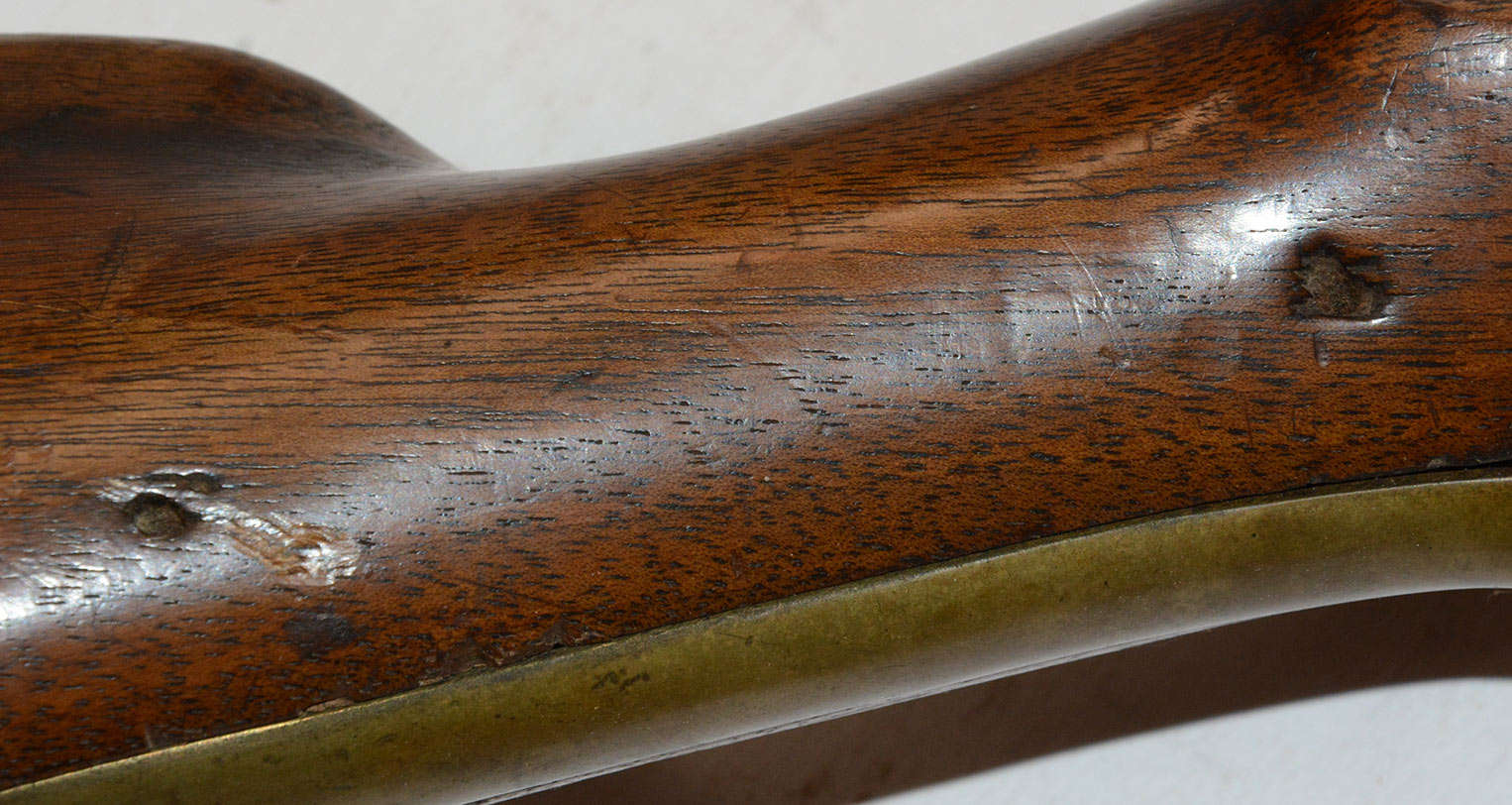


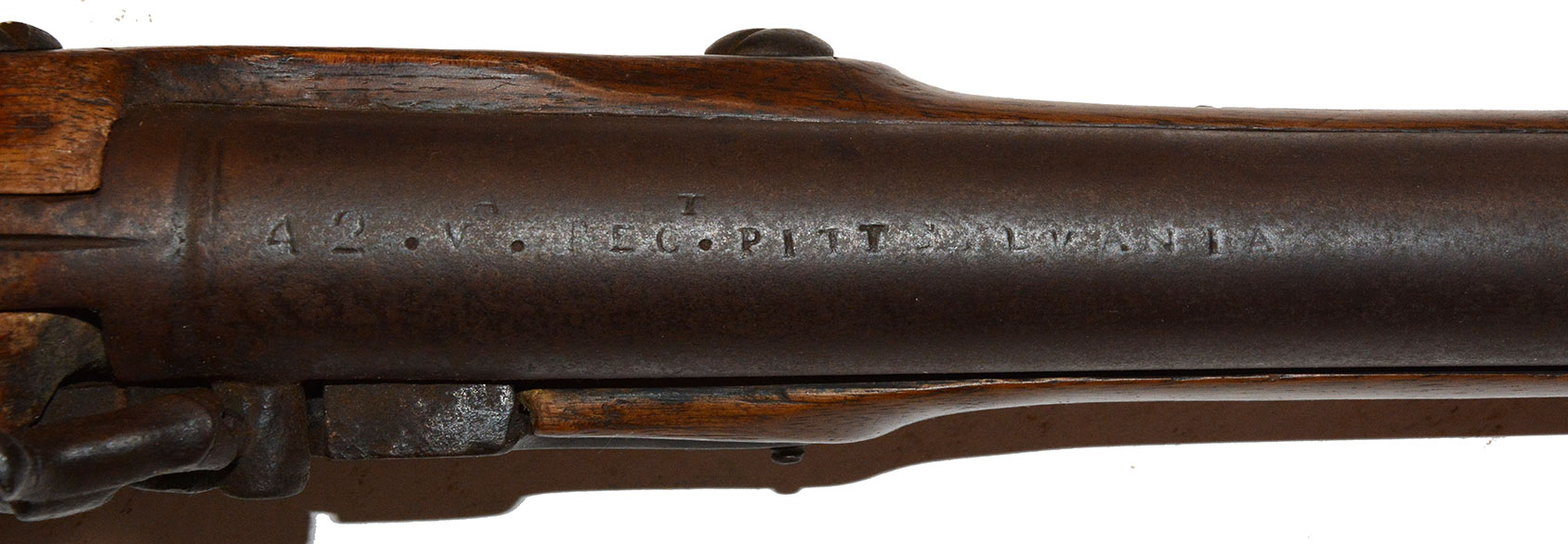
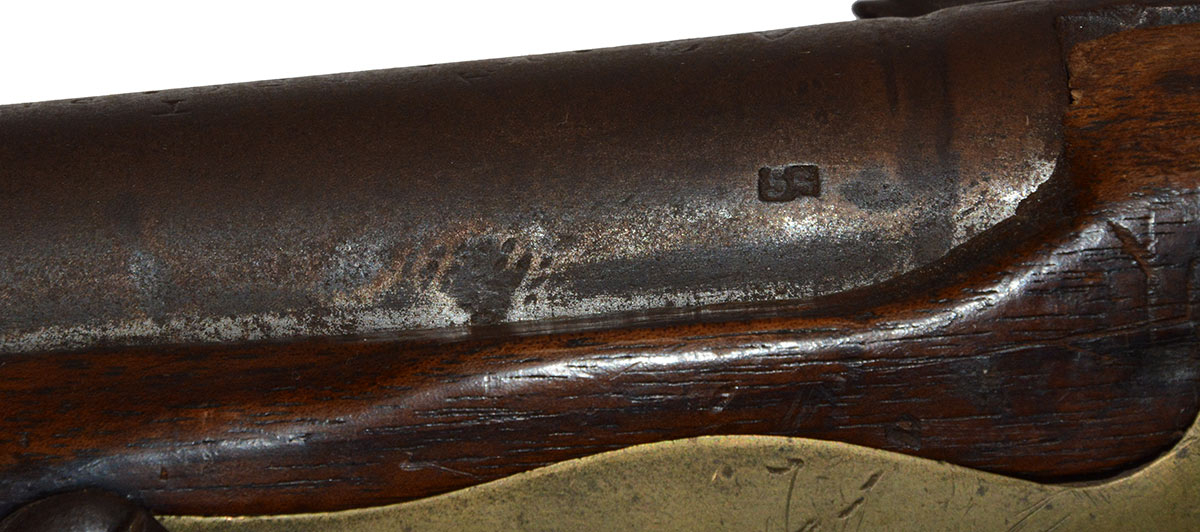
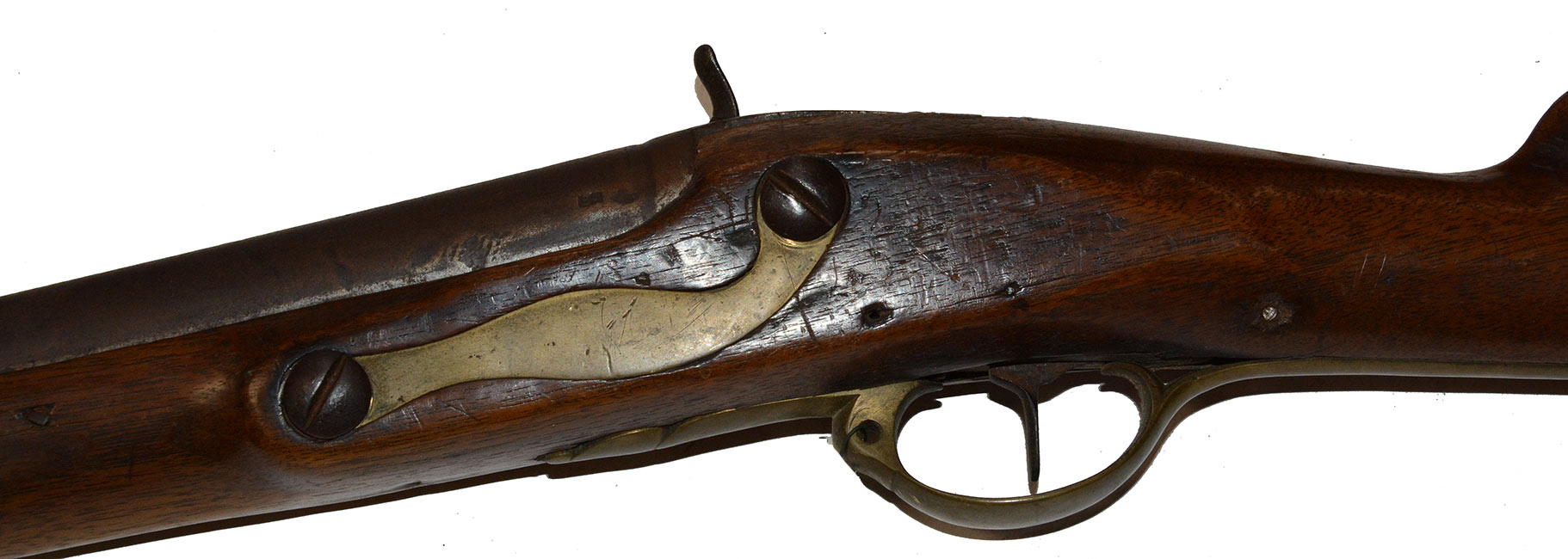
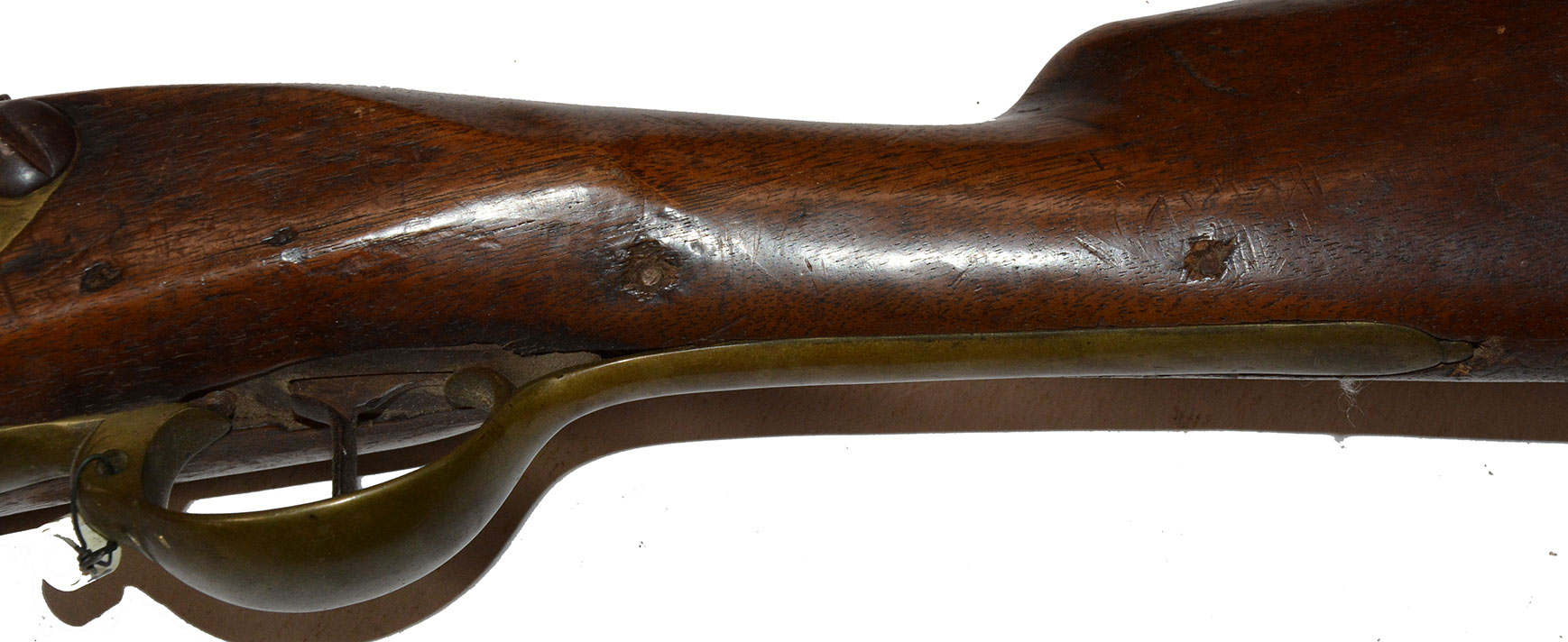
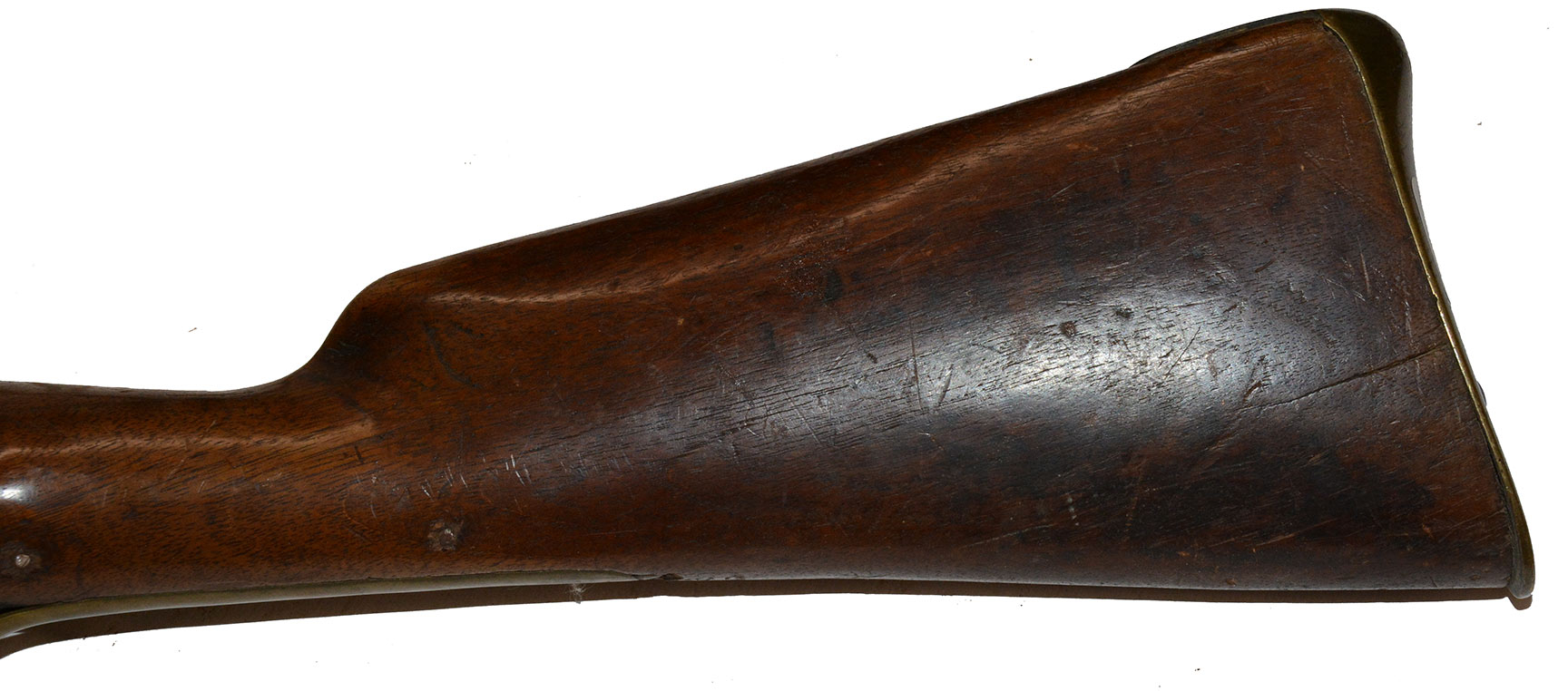
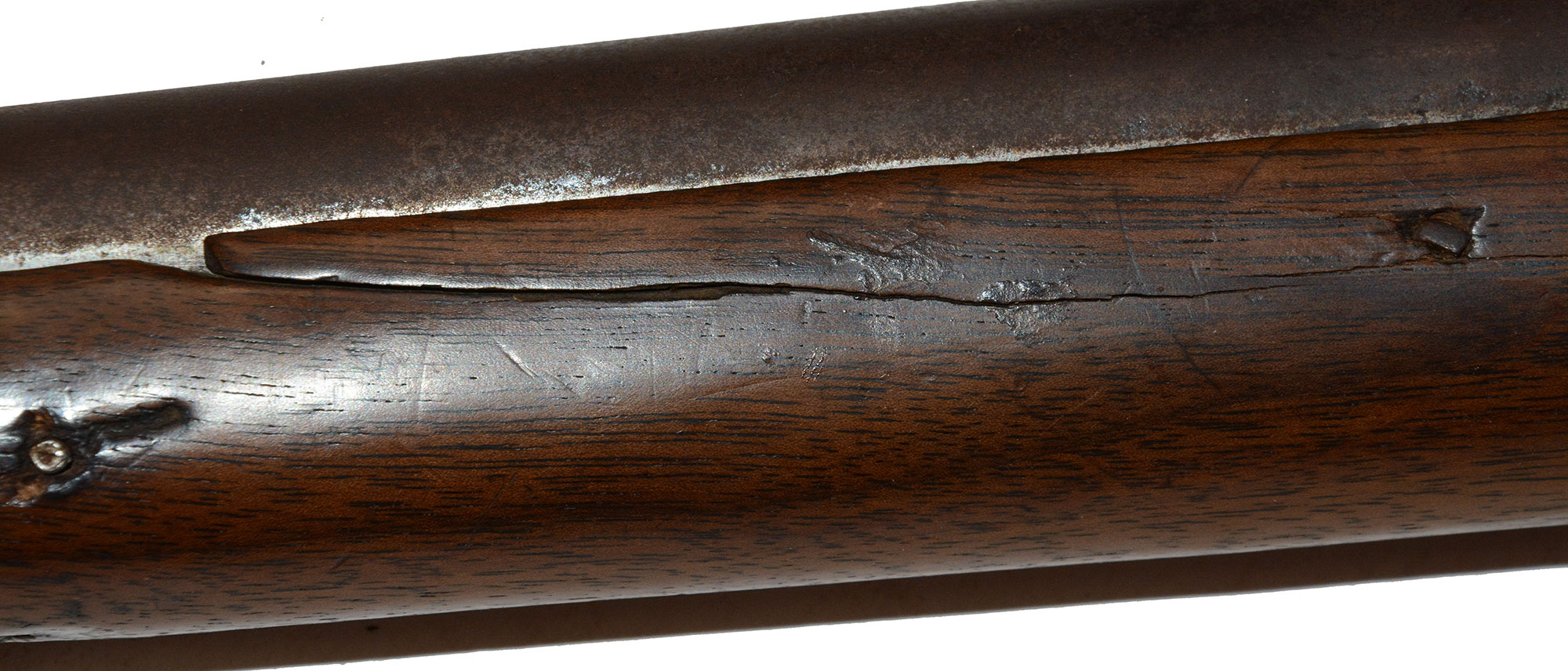
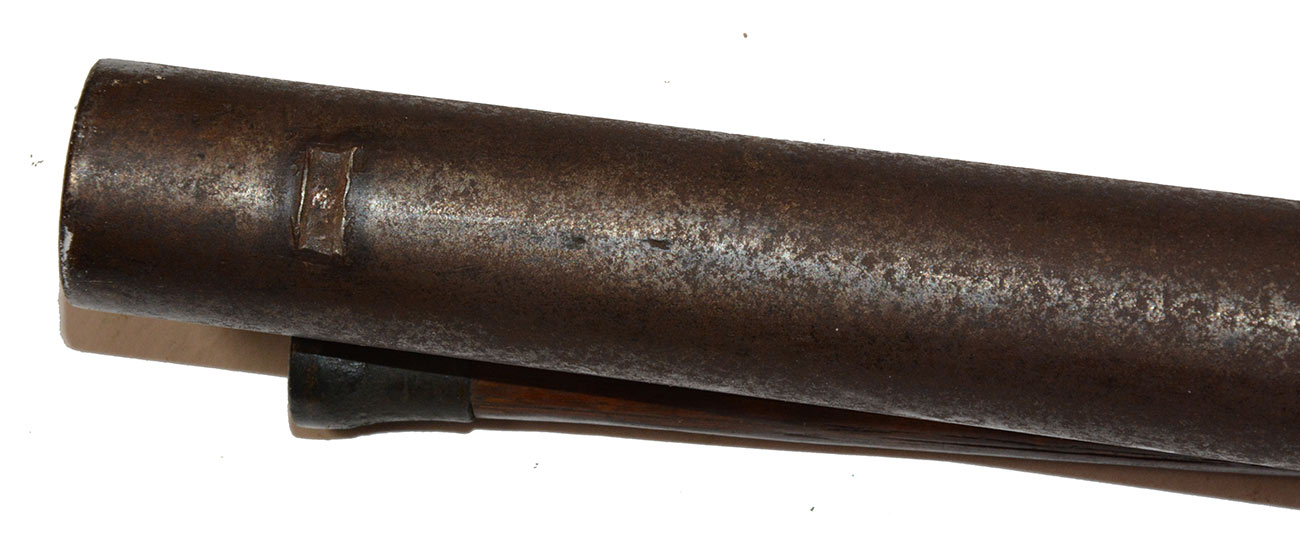
$3,800.00
Quantity Available: 1
Item Code: 1000-241
This musket is stamped “42. VA. REGT. PITTSYLVANIA” on the barrel, was later altered to percussion and then shortened for use in the civilian market. It is a scarce survivor from muskets delivered to Virginia by Jame Swan of Boston in January 1799 and Fall 1800 on two contracts: the first signed in mid-1797 and the other in Spring 1798. These were for 4,000 muskets each following a 1795 VA General Assembly authorization of the Governor to purchase that number of arms yearly. Virginia makers would have been preferable, but efforts to encourage local production had been fruitless. The state received all 8,000 muskets and after some quibbling about quality and price, eventually paid for 7,831 of them.
These muskets were then marked by the state with regimental markings (a practice until at least 1809 and sporadically to 1813) and distributed. By 1808 7,747 were in militia hands, with 251 in storage at the state capitol. According to Moller, by December 1824 there were 4,015 in storage at the state armory, many of which were broken up and sold for scrap in 1833, but many apparently remained in state hands and a few are known with Confederate military conversions. Murphy illustrates a cone-barrel conversion, possibly by Dabney, and a brazed bolster conversion by Robinson. This has a civilian style drum bolster conversion with side-lug and civilian style hammer, but these are also known on Virginia military firearms apparently altered to percussion by smaller gun makers, particularly in western Virginia in the very early days of the war when volunteer troops received flintlock muskets and rifles. See Murphy, 732-733 for two similarly altered Virginia Manufactory rifles.
This musket correctly bears no British maker, ordnance, or proof marks, but shows a British style brass buttplate with short tang, brass triggerguard with recurved bow and acorn finial to the forward tang, and pierced for an absent sling swivel. Brass, flat side-plate secured by two screws and brass rear entry ramrod pipe. There was never a thumbpiece or escutcheon plate on the wrist. (We have handled an example with one, perhaps added by the militia company.) The original two-screw lockplate was retained in the alteration. The barrel is pin-fastened to the stock- also correct, was shortened to 30.5 inches at some point and had a new front sight added, which is now missing, and the stock was taken back to the rear-entry pipe- shortening typical of later civilian use around the farm or in hunting.
The barrel shows shallow pitting forward of the stock and has a smoother brown surface from there back. The regimental markings are very legible. The wood has a nice warm brown tone, but naturally shows rounding to edges, some darker stains, and various dings, scratches and shallow divots. A small T was carved on one buttflat, with a small chip in the middle making it look like an F. There is a narrow, stable crack on the left from the end of the side flat to just shy of the second barrel pin with a small chip at the barrel edge, a short one at the end of the stock, some narrow shrinkage gaps and some burnout under the hammer. The stock preserves the slight swell at the rear entry pipe. The ramrod is wood with a brass tip.
Swan’s first contract muskets were from Liege and the second from a northern German state, perhaps Hamburg. The lock markings are faint. They might narrow it down, but for both contracts the locks were probably made by several subcontractors and in terms of usage in Virginia it does not matter since the guns were purchased, marked, and distributed as one lot. Virginia state weapons are a collecting category of their own and reflect an interesting history of the state’s efforts to arm its citizen soldiers in the years following the Revolution. [sr] [ph:L]
DISCLAIMER: All firearms are sold as collector's items only - we do not accept responsibility as to the shooting safety or reliability of any antique firearm. All firearms are described as accurately as possible, given the restraints of a catalog listing length. We want satisfied customers & often "under" describe the weapons. Any city or state regulations regarding owning antique firearms are the responsibility of the purchaser. All firearms are "mechanically perfect" unless noted, but again, are NOT warranted as safe to fire.
~~~~~~~~~~~~~~~~~~~~~~~~~~~~~~~~~~~
THIS ITEM, AS WITH ALL OTHER ITEMS AVAILABLE ON OUR WEB SITE,
MAY BE PURCHASED THROUGH OUR LAYAWAY PROGRAM.
CLICK HERE FOR OUR POLICIES AND TERMS.
THANK YOU!
Inquire About VERY SCARCE 1799-1800 SWAN CONTRACT VIRGINIA MILITIA REGIMENTALLY MARKED MUSKET: 42nd REGIMENT, PITTSYLVANIA
Most Popular
Historical Firearms Stolen From The National Civil War Museum In Harrisburg, Pa »
Theft From Gravesite Of Gen. John Reynolds »
Selection Of Unframed Prints By Don Troiani »
Fine Condition Brass Infantry Bugle Insignia »
Large English Bowie Knife With Sheath 1870’S – 1880’S »
Imported (Clauberg) Us Model 1860 Light Cavalry Officer's Saber »
featured item
LIGHT INFANTRY HUNTING HORN FOUND AT THE STONE WALL NEAR THE ANGLE AFTER PICKETT’S CHARGE AT GETTYSBURG
This small Light Infantry Hunting horn was used to signal European Light troops like German “Jagers,” French “chasseurs” or English Light Infantry. Its wide use caused it to become the universal infantry insignia of the mid-Nineteenth… (2025-3332). Learn More »


